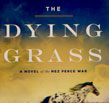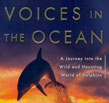 |
 |
06-13-09: Sharpen Your Sensibilities with 'Single Scene Short Stories' : There and Not There
'Single Scene Short Stories' (Gibbs Smith ; March 15, 2007 ; $14.95), edited by Margaret Bishop offers fiction at its most basic level — single scene short stories. Each story is set in a single place, in a single time and in one continuous stream. In this strict, and what some might call restrictive, format, the true and most basic powers of fiction are revealed. This is where good writing is always raw, where the power of words is condensed to the point of purity, where fiction is revealed not as a narcotic or an escape, but a slap in the face, a forceful reminder of the urgent power of language. It controls us all.
Here, in many ways, is a book that every reader should have for a variety of reasons. You get Amy Hempel and Anton Chekov in the same volume; James Joyce and Michael Chabon; Jack London and Joyce Carol Oates. The author list alone makes this a must-buy, because you get the best work by these authors in a book that clocks in well under 300 pages. As an English lesson, as a tour of the greatest writers, you’re not going to find a more succinct volume. And, given the vast number of writers here, you're also getting a wide variety of styles. There's over a month of night-stand reading here, and that's a pretty fast indoctrination into the literary canon. What you'll find is that great fiction gets that label because the reading experience is wonderful. The sheer level of craft on display here is breathtaking.
And that craft is part of the allure, not just on a quality level, but also on a learning level. In these short stories, you can really see the skilled use of the literary toolkit right there, in clear lighting, up close and personal. What I fond interesting was the use of what's not there in the story, in scene. In Hemingway's "Hills Like White Elephants" and Rob Carlson's "Olympus Hills," what's on the page spends most of its time circumscribing what is not on the page, what is not in the scene, what is not being mentioned. Each of these stories is a pristine, perfect lesson in how to write well. And each one wears that lesson on the outside. You can experience them as prose fiction, or as prose examples of great fiction, that is, lessons in how to write well. You can dream.
Gibbs Smith makes a particularly nice book. This is a trade paperback with flaps and a sturdier-than-usual cover stock. The paper is nice and whiter than white; the type is classy and easy-to-read, perhaps too much so, since the stories slip by so quickly. These are in general short, short stories. But you'll not forget them — or the writing lessons they suggest — for a long time.
|
|
06-12-09: Helen Oyeyemi Knows 'White is for Witching' : Weirder and Weirder
But more often than not, you want the unusual unusual, the weird fiction that seems like the product of a slightly diseased mind, or rather a mind that is excellent at expressing the thoughts of those with diseased minds. You want the stream-of-strange that drags along behind it the ghosts, the demons, the monsters of the id and the things that scare all those ghouls away. For today, at least, you’re likely to want Helen Oyeyemi's 'White is for Witching' (Nan A. Talese / Doubleday / Random House ; June 23, 2009 ; $25). By the time you get to like, page 7 here, you're going to find more weird than you'd get in that entire 12-brick trilogy. True, it may be a bit short on busty babes with big weapons, but it compensates with fraternal twins in a house that gives them a run for their money so far as character goes.
'White is for Witching' is a very weird book, of the sort that divides readers. Two sisters in a house, slowing going mad or already there, surrounded by a chorus of voices that may be ghosts, the house, or simply the shattered remnants of their sanity circling around endlessly in the night, chattering. Oyeyemi writes as if she were possessed, or creating a spiritual transcript of the shades that hover in 29 barton road. The house has long disliked people who aren't the sisters, and it's not so sure about them, either. For a large and drafty residence, it's teeming with the past, and happy to give voice to anything and anyone.
Oyeyemi writes a superb unusual unusual novel, slim, smart, stripped down to the voices you wish you couldn’t hear as you're trying to fall asleep. And even though the book barely tops 200 pages, you're going to find more than enough strangeness to last a while, more than enough dark, disturbing prose to actually unsettle your soul. Oyeyemi isn't about the terrors of being sliced, diced and eaten. Frankly, that might be a relief compared to what her world offers. Which is probably why you'll find the novel not stocked with the usual unusual, but instead resting insidiously innocent with books about happy things and happy people and places and events that largely make sense to the story-seeking western mind. Oh, 'White is for Witching' makes sense all right — but some readers may regret sussing it when they find themselves unable to sleep at night. Listening for the voices. Wondering what their houses have to say about them.
|
|
06-11-09: Find Your Travel Muse with Museyon : The World is Your Movie
You can see the world in a number of ways. Armchair travel is a favorite of readers, and fine way to engage without having to leave your comfy home. You can — and generally should — actually leave once a while to see places you've only seen in your imagination, in books. Or you can see the world via movies. But having seen the movie might just whet your appetite for the reality.
Enter Museyon with 'Film+Travel: North America > South America' and 'Film+Travel: Europe' (June 27, 2009 ; Museyon ; $18.95), two travel guide specifically designed to offer guided tours of the world according to movies. The idea is quite brilliant and pretty simple — in hindsight, of course. Each book contains eight essays, offering travel advice on how to see the locations where movies were filmed, or perhaps supposed to have transpired, since so many great places were created on back lots in LA. They're packed with color photos from the movies and from what at least passes for real life. Whether you're a movie geek who wants to know where or a traveler who wants to go there, these books have you covered.
Museyon really wants to have it all and does a pretty damn good job at doing so. Let's take it from my perspective; I'm an avid reader but a reluctant traveler. If you’re just going to sit down and browse the world, so to speak, the two Museyon Guides I have offer a great way to do so. Because they’re oriented to films, each of the essays has a nice through-line to carry the reading experience, and each writer brings a slightly different voice to their tour. The film trivia are fascinating and extremely well-researched. For example, if you want to know where the ruins that appeared in both Pan's Labyrinth and The Adventures of Baron Munchausen can be found, this is your book; two film-geek facts in one paragraph. (They're in Belchite, a town near Sargossa along the Pyrenees, ruins left standing by Franco as a warning to rebels.) There's a guide to Hitchcock's London that could keep your DVD player busy for a week, and a lovely guide to San Francisco via Bullit. It makes for great reading.
As trip planner, The Museyon Guides offer lots of specific locations and addresses, as well as advice about what to expect when you get there. For example, as lovely as the neighborhood where Amelie lives looks, you shouldn't be too surprised to find out that it's rather more modern-looking than the film suggests. But if you want to get a gander at a house that's truly "Mexican-looking," Enrique Ramirez points you to Casa Azul, Frida Kahlo's house. And since Canada has essentially overtaken the San Fernando Valley as "Everywhere, USA-World," you'll, definitely want to get a gander at all the places you've never been.
Art direction and production values are top-notch for the Museyon Guides. The printing is peerless and the books are small, sturdy trade paperbacks. Be careful about picking them up, especially you love movies. The photos alone will suck you in and the effective writing will win you over. 'Film+Travel' are essentially movies, starring you, waiting to happen.
|
|
06-10-09: A Review of 'The Strain' by Guillermo Del Toro and Chuck Hogan : Welcome To Your Nightmares
It's easy to determine how much a cookbook is worth is you. Ask the questions, "How often do I use this?" and "For how long have I used this?" The second is important. And thusly, my mother's tattered copy of 'The Joy of Cooking' wins hands-down when it comes to how much a cookbook is worth. I still use it all the time; whenever I cook a roast, or a turkey or Yorkshire Pudding. It has some basics in there that are always useful, even if you're not cooking that precise recipe.
Molly Katzen's 'Moosewood Cookbook' and 'The Vegetable Dishes I Cannot Live Without' are considerably younger but headed towards the same destiny. I'm guessing one day the tattered copies will be in my kids' kitchens. Likewise, 'Donburi Mania' the first Vertical Inc title from Kentaro Kobayashi. There are some basics in there — a potato salad recipe, and a number of the "Mixture A" recipes that can be easily transplanted into other uses.
Now along comes 'Noodle Comfort' (Vertical Inc ; June 23, 2009 ; $14.95), with a new batch of "Easy Japanese Cooking" that happens to include a whole chapter of Italian-esque pasta dishes. Forget the classification and focus on the results; to quote Damon Knight via Rod Serling, "It's a cookbook!"
And thus far, one hell of a good cookbook. So far I've made two/three dishes. A couple of days ago, I made Salmon and Penne Au Gratin, pretty much to exact spec, though I used only a teaspoon of curry powder where he had me use a tablespoon. Next time around, I'd probably go with the tablespoon. I have to say it was really quite spectacular, and, as advertised, very easy. The bottom line was this; I easily made a dish that looked exactly like the photograph. I thought it was excellent, though the wife was so-so on it. My brother-in-law thought it was fantastic and ate a portion for two ... but that's a Kobayashi eccentricity, really, since he apparently feeds people with small appetites.
|
|
Salmon and Penneau Gratin |
Last night I made one/two dishes; Cha Shao Pork with Cha Shao ramen soup. This involved boiling a pork roast and then using the broth for soup (add noodles and spinach and few condiments) and then cooking the pork in a reduction sauce. The pork utilized a wonderful Mixture B, which I of course prepared in a triple recipe. The ramen was pretty much finished when the pork finished boiling. It did use a boatload of dishes, however. I filled up the dishwasher with ease. And unusually, I had a fair amount of leftovers, enough for dinner tonight.
'Noodle Comfort' offers up a lot of new flavors and styles of cooking from Kobayashi. There's that whole section of Italian food, and a lot of soups/noodles, of the sort you might want to buy for lunch from your local noodle vendor. (Here we have Charlie Hong Kong [http://www.charliehongkong.com/], but it's sort of a drive from my house.) That's what the Cha Shao Ramen soup is. Kobayashi does a few things different here. You'll find more recipes for four in this book. You'll also find a lot of recipes calling for some part or whole of a "nub" of ginger, which proves to be about a thumb-sized section of ginger root, peeled. Just in case you were wondering. The reference guide is a little more useful as well, with pointers to web sites that sell some of the things you may not be able to find easily in your stores. (Kobayashi almost always supplies substitutions for the more exotic ingredients; but if you're lucky enough to have a good oriental grocer close, you'll be fine. The closest to me is over the hill, a major drive.)
To my mind, these recipes are a smidgen harder that the Donburi recipes, but it is early days yet. There's a lot of really good lookin' Italian recipes in here. Now, the emphasis on pasta is somewhat unfortunate for anyone hoping to lose weight, but one can be judicious with the noodles. And of course, you can bet that if there's any reason, Kobayashi will put an egg in a recipe, and thus you get Napolitan Egg Spaghetti which looks really good, but is certainly not what you'd expect. Still, in the end the art of writing a cookbook involves writing recipes that the readers will want to and be able to prepare, not just once but a lot of times. And it involves finding more universal cooking tropes, like Kobayashi's "Mixture A's." Anyway you slice it, 'Noodle Comfort,' lives up to its title and the mission of a cookbook — to achieve that ragged, tattered, stained and used look. To be passed on to the next generation.
|
|
06-08-09: A Review of 'The Strain' by Guillermo Del Toro and Chuck Hogan : Welcome To Your Nightmares
Before I turn you over to my review of 'The Strain', I do want to emphasize that I don’t come to vampire fiction willingly. I'm not a fan of the stuff. The sublimated sexuality, the goo-goo eyes, the neck-biting, blood drinking — actually, vampires are usually too human for my taste so far as monsters go. I'd rather just settle for a cliché serial killer than a cliché vampire. But right off the bat, 'The Strain' proved to be one of those books that was not going to let me go.
That's because, in part, the novel is brilliantly paced and extremely well-written. But I didn't find that out until I was well into it. No, what won me over was the notion of vampires as a virus, not just vampires with a virus. 'The Strain' has a good deal of 'The Hot Zone' in it in terms of sharing the joy, so to speak. But we also get a lot of monster-view and monster vision, a lot of biology and dissection and all the stuff that vampire novels usually avoid. I'd suggest that this isn't a vampire novel so much as it's a monster novel. 'The Strain' is mostly just a good book that will remind you why it is fun to read. And be terrorized by what you read.
|
|
|
 |
|
|
|




